Midtre LovénbreenMidre Lovénbreen is a small valley glacier descending for 4 km from the mountainous backbone of the peninsula of Brřggerhalvřya in NW Spitsbergen. It is ringed by peaks and arętes that reach 855m. It terminates at the inner edge of the coastal strandflat that borders Kongsfjorden. Thermally, the glacier is classified as polythermal, in that most of the ice is below the pressure melting point, except in the thicker parts of the glacier where geothermal heat warms the base to the melting temperature. The glacier has receded about 1 km from its Neoglacial maximum of around 1900 AD, leaving an outer complex of hummocky moraine, inside of which is an extensive area of glacial and glaciofluvial deposits that covers the bedrock. The glacier is the most thoroughly studied in Svalbard, and has a mass balance record going back 40 years. |
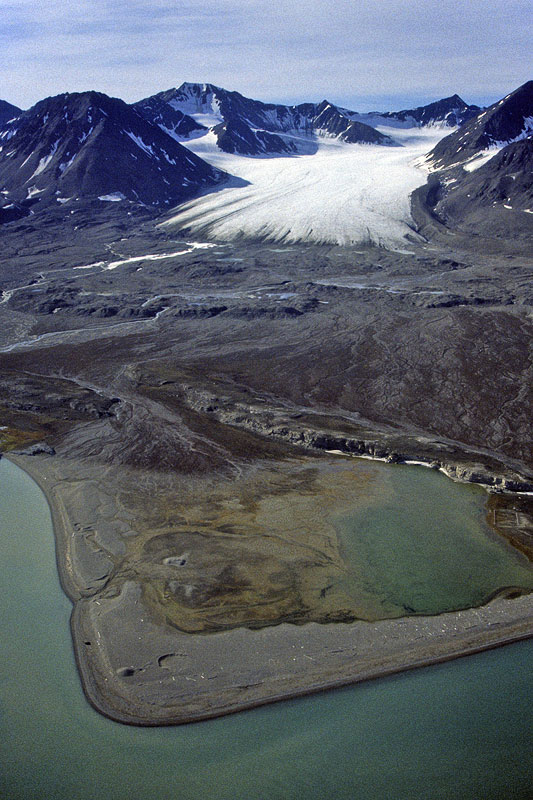 Context of Midre Lovénbreen from the air in 1999, showing surrounding mountains and low ground with glacial depositional landforms and a coastal spit in front (MH). | 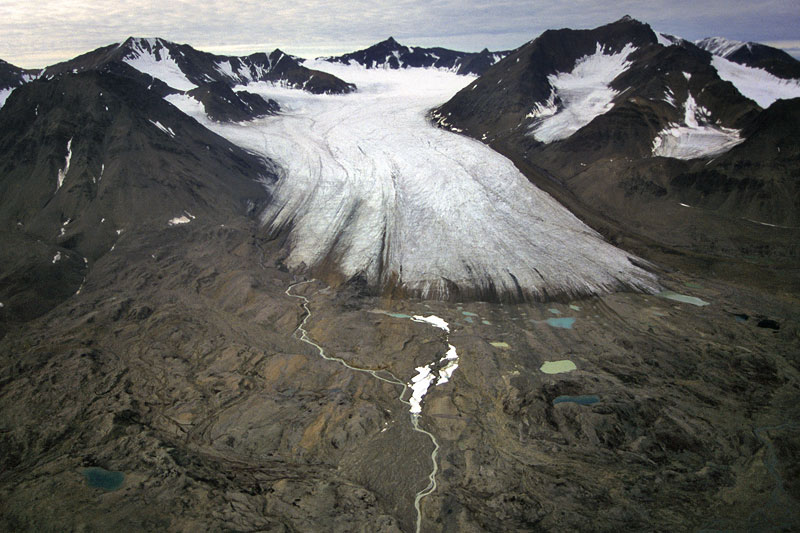 Another aerial view from 1999, illustrating the medial moraines emerging near the snout, and extending as debris stripes onto the proglacial area (MH). | 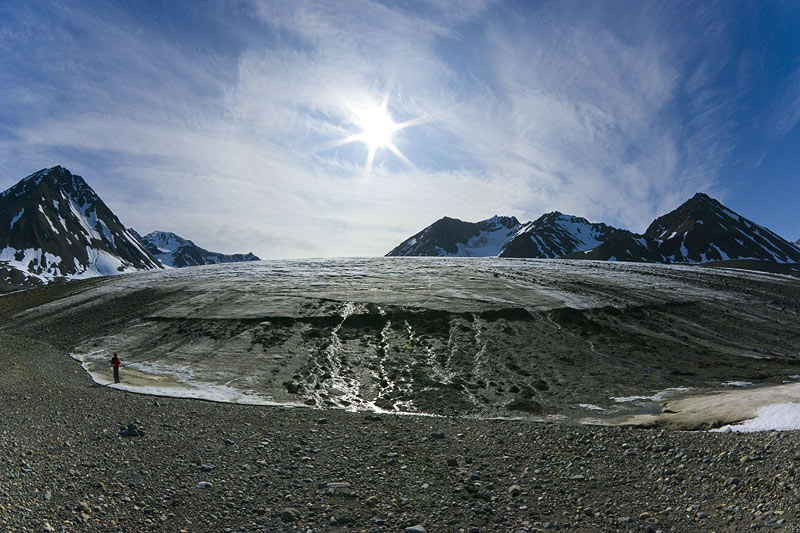 Wide-angle view of the snout of Midre Lovénbreen, showing supraglacial streams, a long transverse debris-laden thrust and fluted basal till in the foreground (July 2009; JA). | 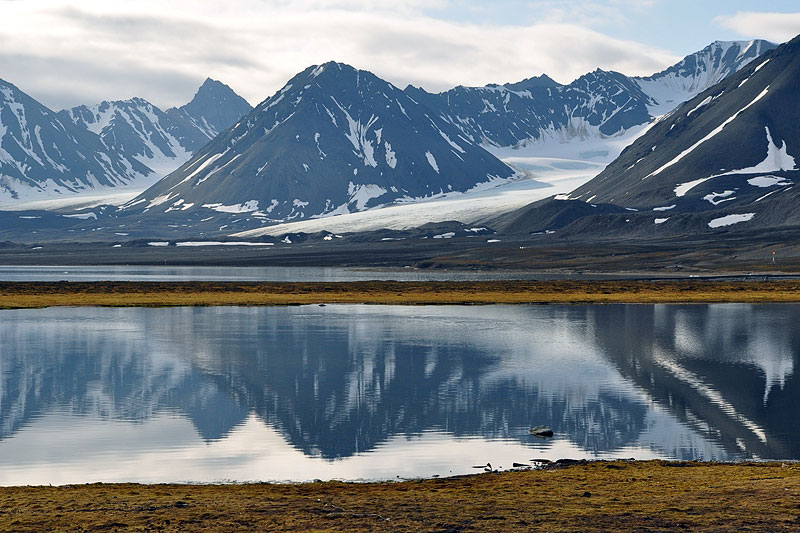 Midre Lovénbreen reflected in small lake at Ny-Ĺlesund in 2009 (MH). |
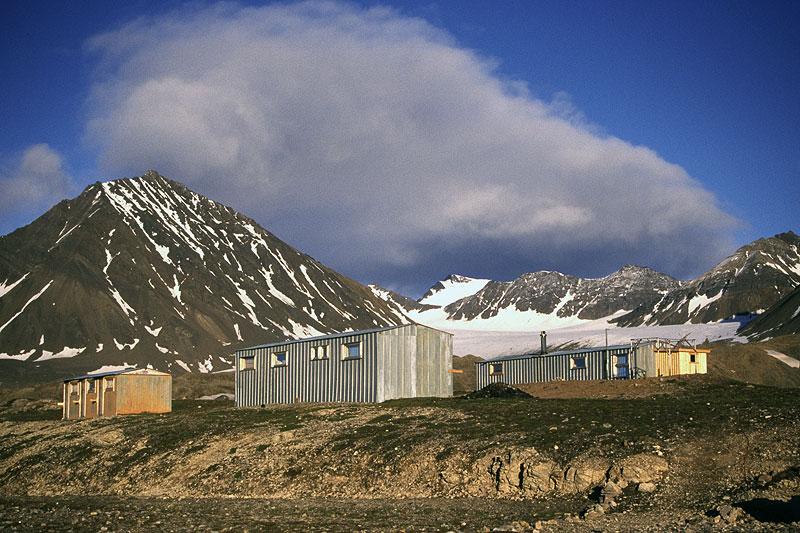 A convenient base for working on Midre Lovénbreen is the French Corbel Station, located on a rock ridge outside the Neoglacial moraines. Photo taken in 2000 (MH). | 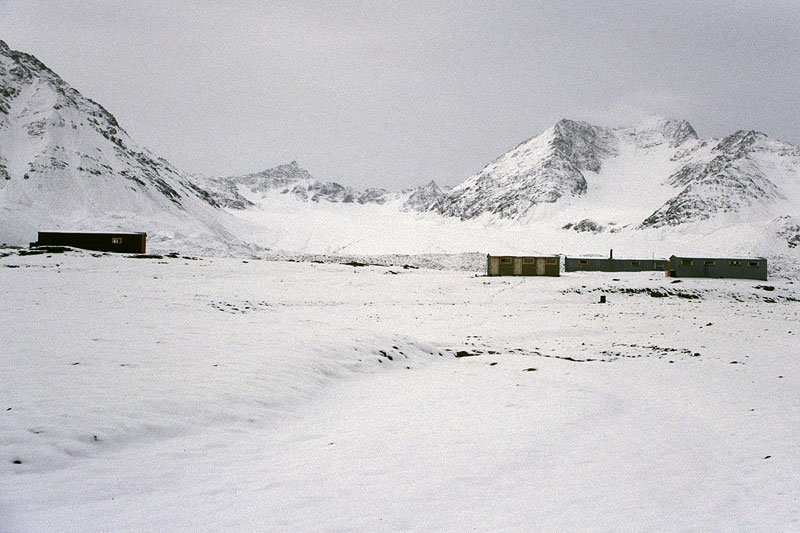 Corbel Station with the glacier in the background after a mid-summer snowfall in 2000 (MH). | 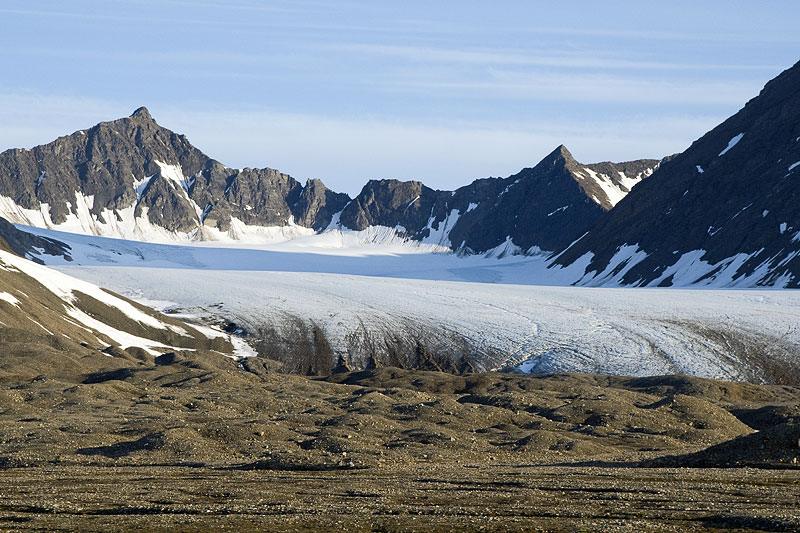 The glacier snout with medial moraines viewed from Corbel Station in 2009 (MH). | 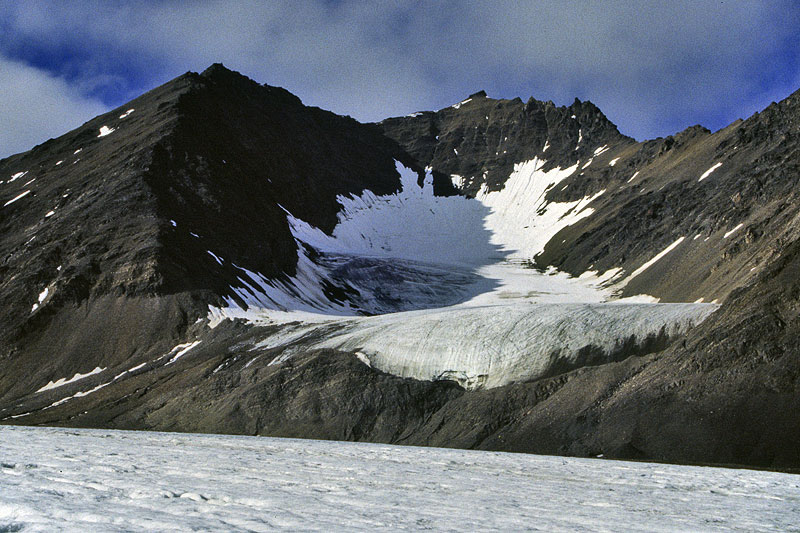 Above the left flank of Midre Lovénbreen is a un-named well-proportioned cirque glacier below the peak of Berteltoppen (785 m) (MH). |
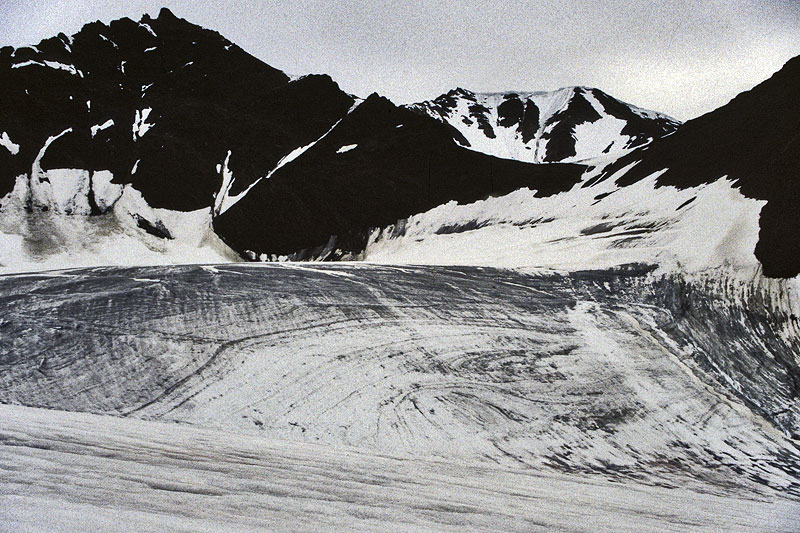 Cirque on right flank of Midre Lovénbreen still feeding the main glacier. Stratification and folding are clearly visible (MH). | 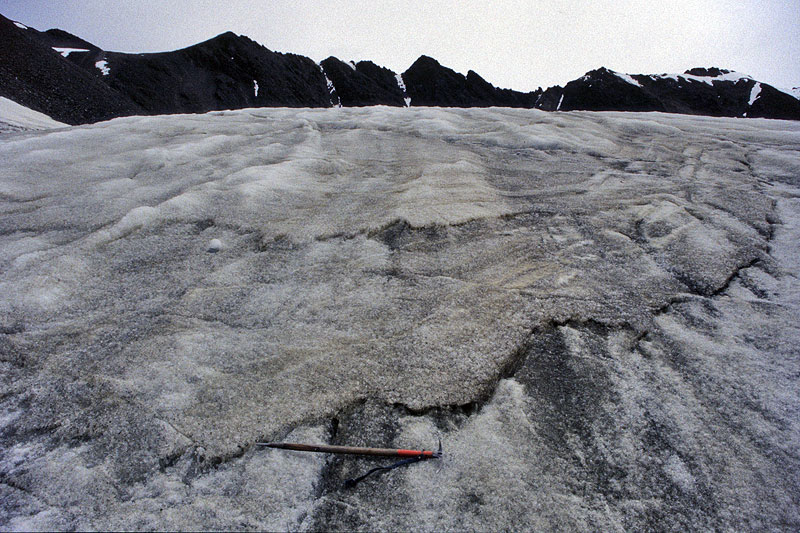 Unconformity separating young ice above the ice axe from old ice below in 1999 (MH). | 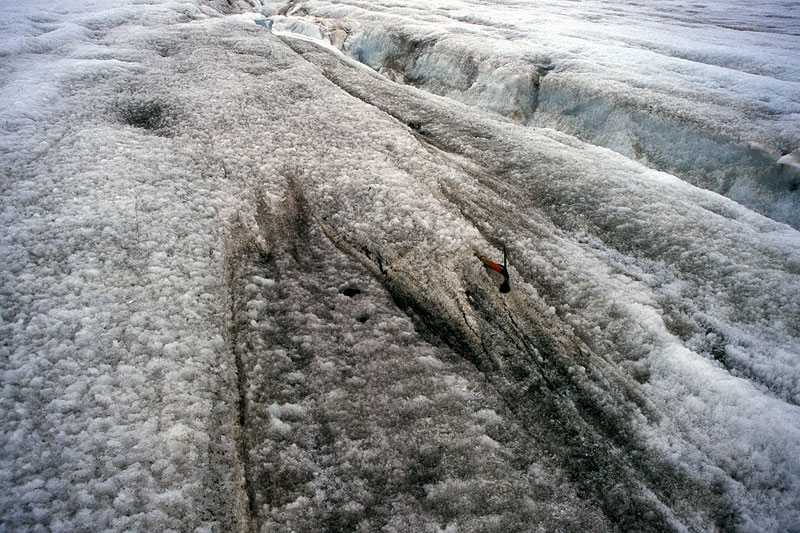 Folded stratification and associated longitudinal foliation in main tongue of Midre Lovénbreen in 1999. Flow towards the camera (MH). | 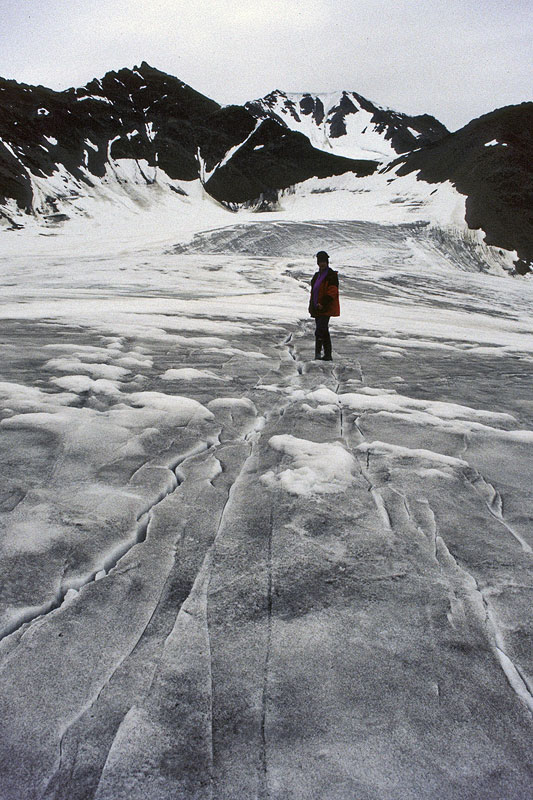 Midre Lovénbreen has very few crevasses. These small cracks in 1999 were located in one of the glacier’s tributaries (MH). |
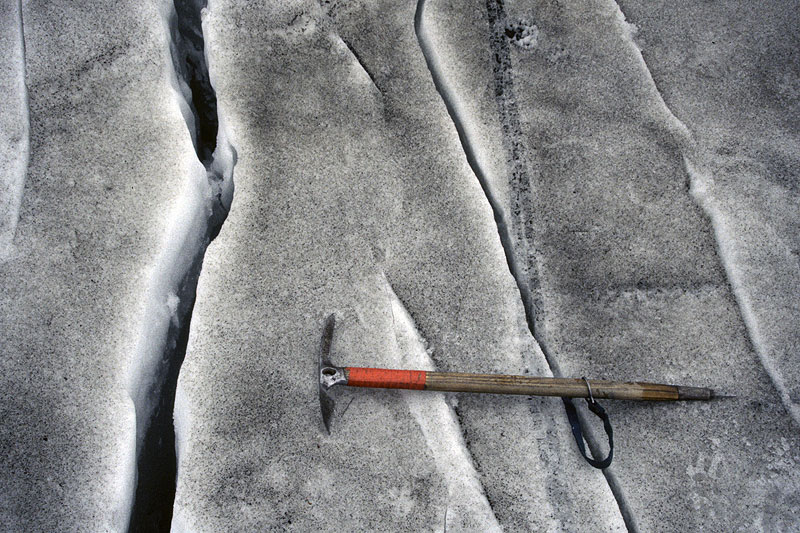 Close up view of small crevasses and a crevasse trace (the dark vein of ice to the right of the head of the ice axe) in 1999 (MH). | 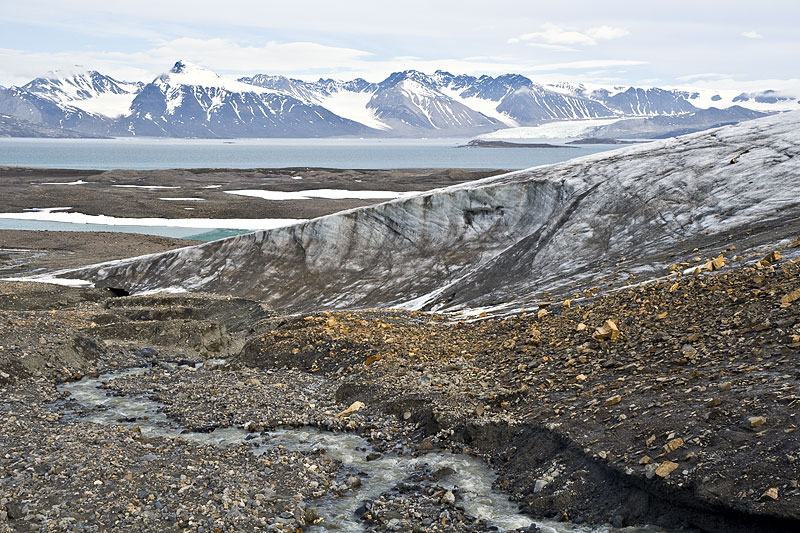 Site of stream-eroded tunnels along western margin of the glacier in 2009 (MH). | 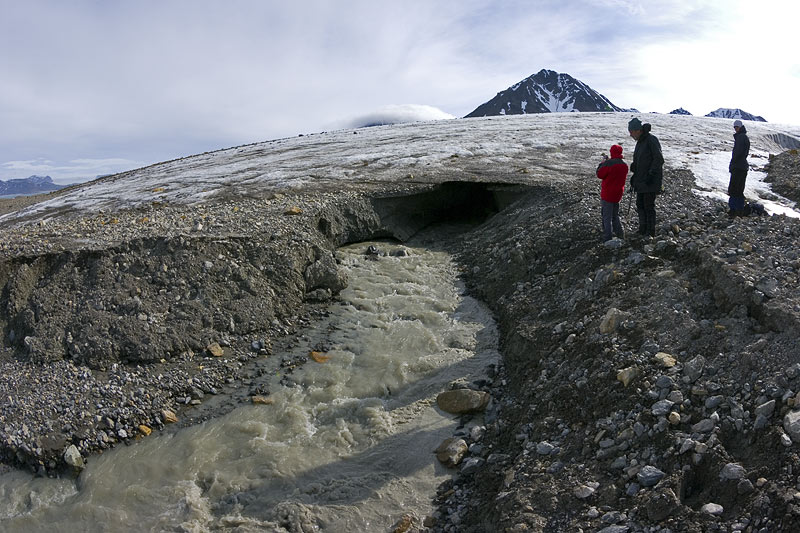 Outflow from the base of Midre Lovénbreen at the true left margin of the glacier. The stream is cutting through frozen subglacially deposited debris (July 2009; JA). | 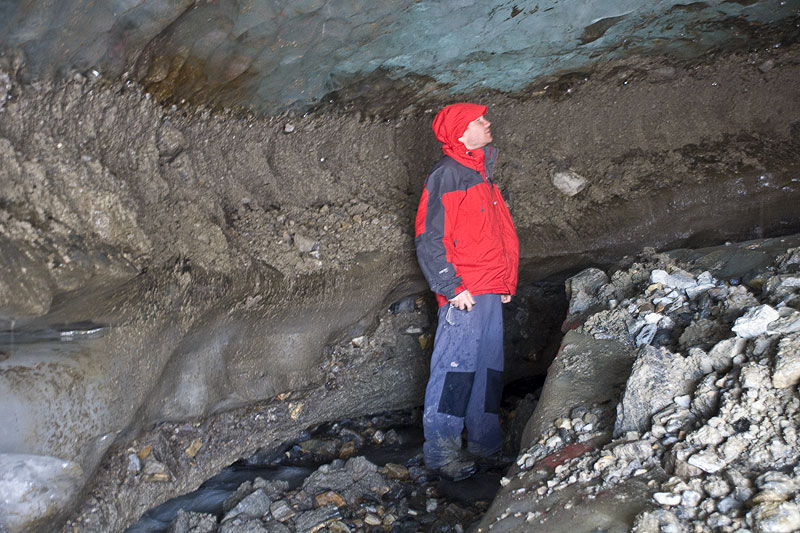 Basal debris and glacier ice in tunnel at western margin in 2009 (MH). |
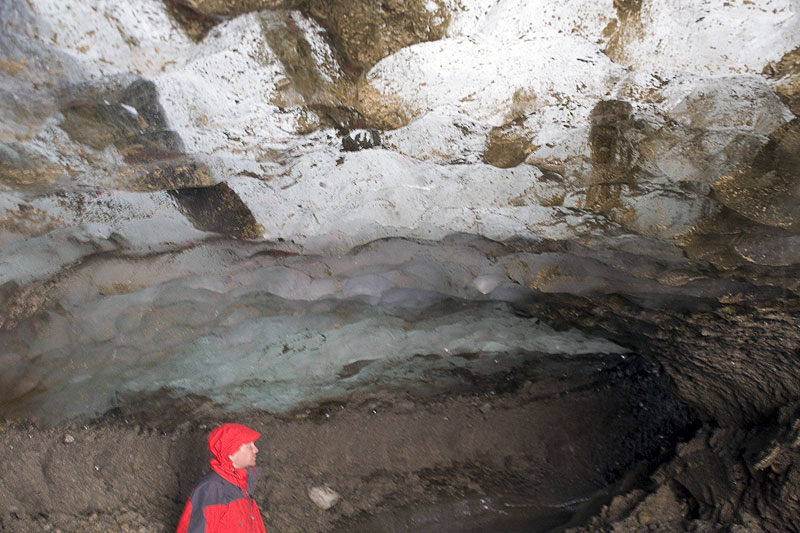 The roof of the tunnel showing details of debris content of basal derivation (MH). | 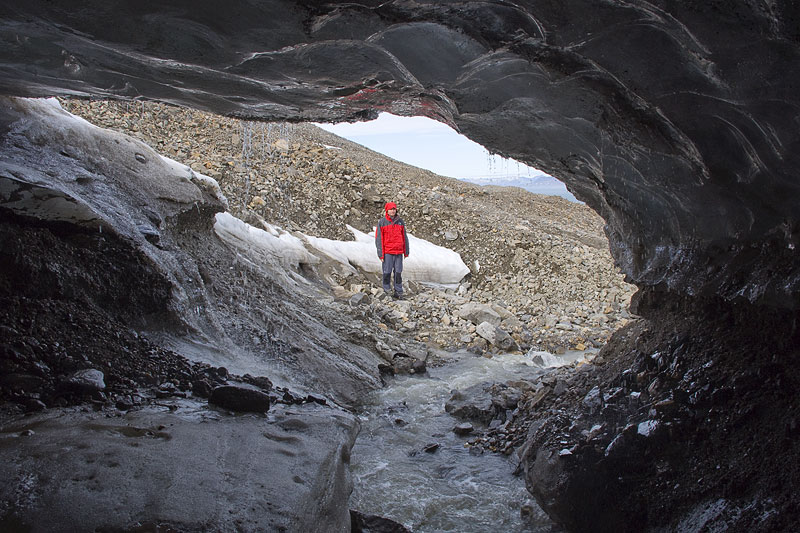 Looking outside of one of the tunnels with stream bed on its floor in 2009 (MH). | 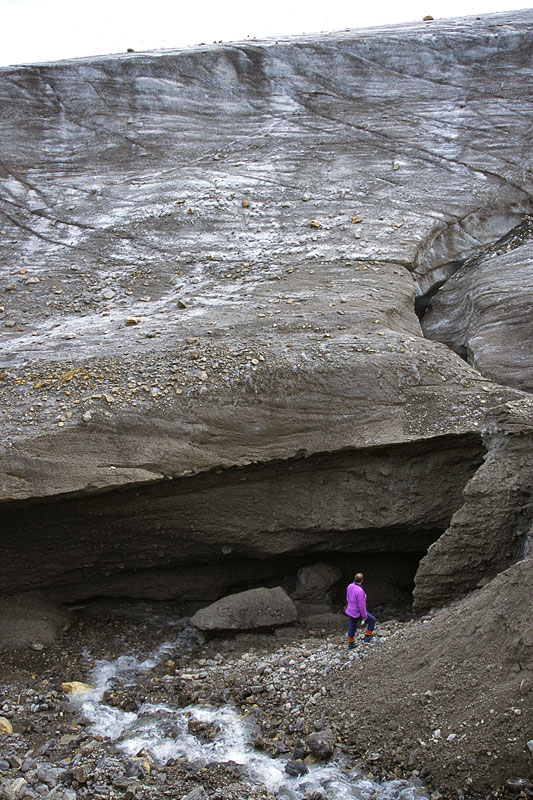 Subglacial/ice-marginal stream re-entering the glacier at the left margin in 1999 (MH). | 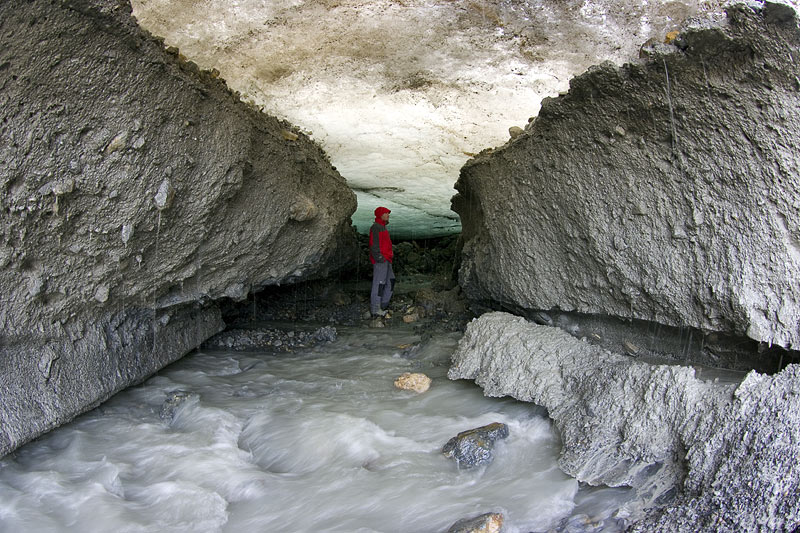 An ice-marginal stream at the true left margin weaves in and out of the glacier. Here it has incised through subglacial sediment, deposited when the glacier was more active and wet-based (July 2009; JA). |
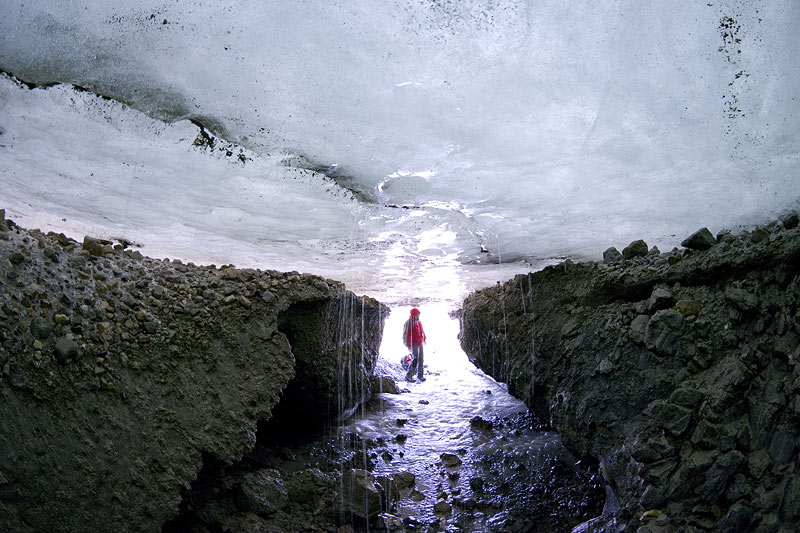 Looking out from the subglacial channel as meltwater drips from the roof. Note the sharp contact between the subglacial debris and clean glacier ice above (July 2009; JA) | 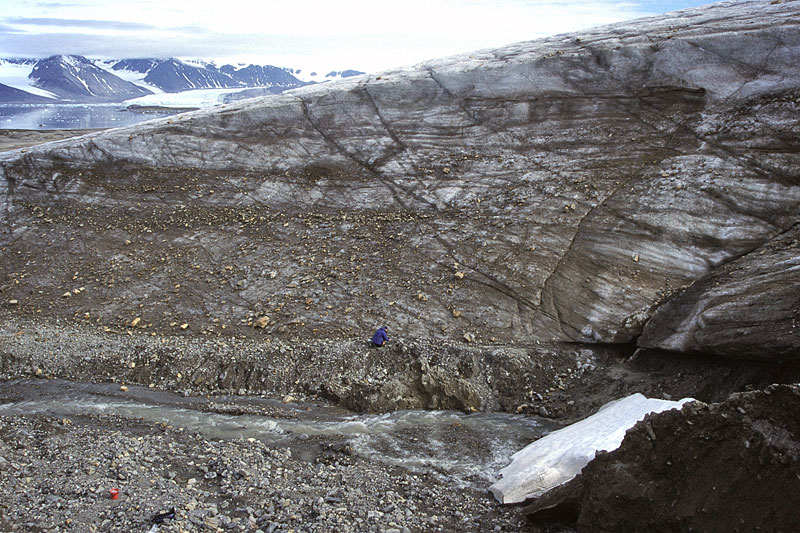 Thrusts (low-angle fractures) propagating from the basal debris zone at the left margin of the glacier in 1999. Person for scale lower middle (MH). | 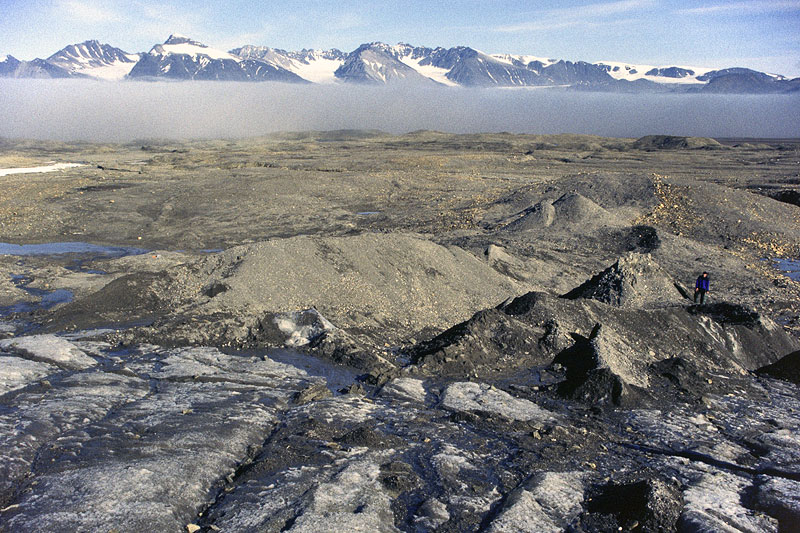 Ridges of debris, derived from thrusts and fractures, deposited at the surface of the glacier, near right-hand margin deposited at the surface of the glacier, 1999 (MH). | 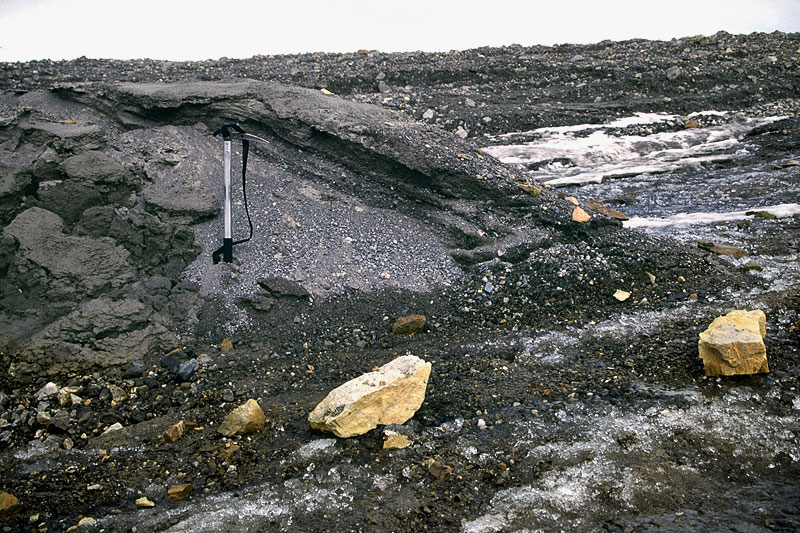 Thrust ridge of glaciofluvial sand near left margin of glacier in 2000. Original sedimentary structures are preserved (MH). |
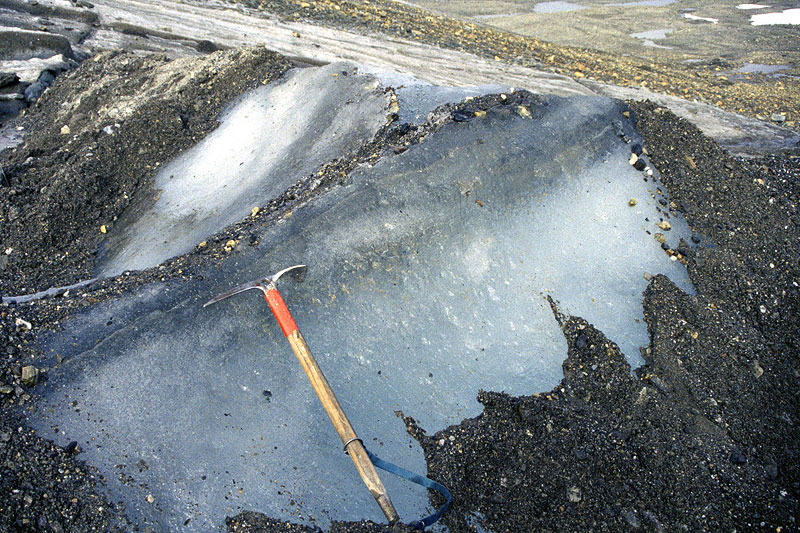 Washed surface of the glacier, showing the small amount of basally derived debris associated with one thrust, 1999 (MH). | 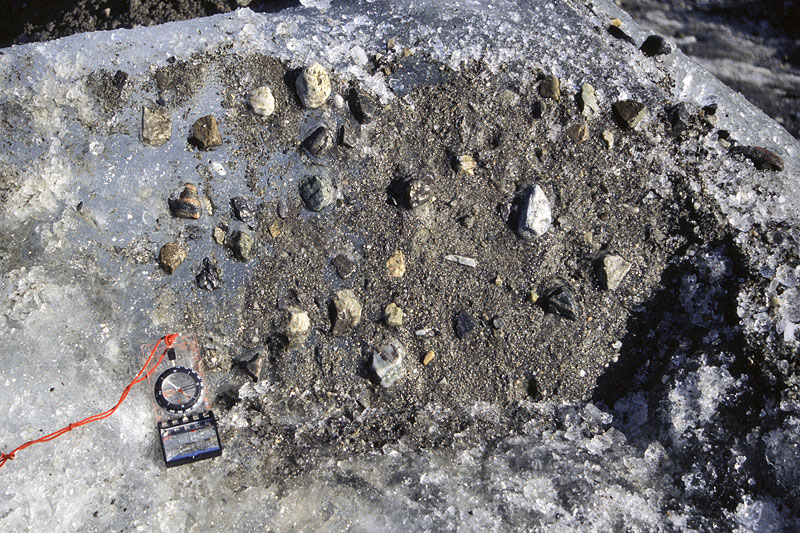 Basally derived gravel clasts exposed on a thrust plain after washing the glacier surface, 1999 (MH). | 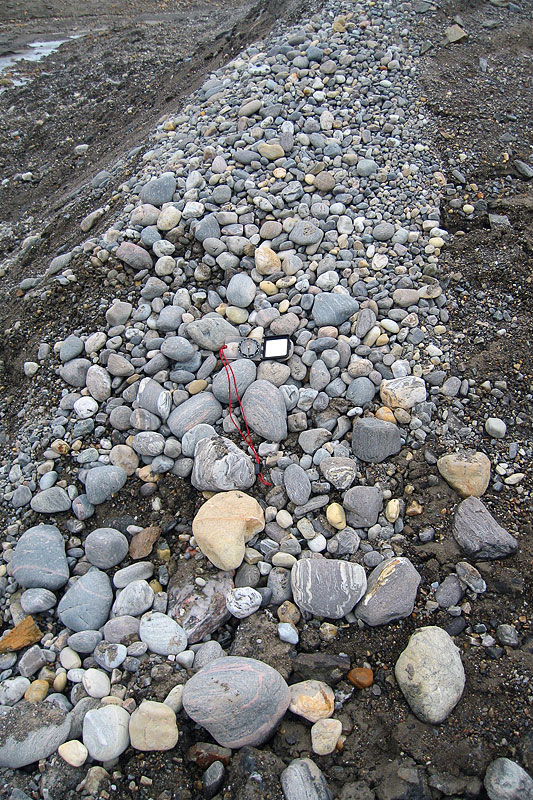 Unusual well rounded gravels (“egg” gravels) emerging from a fracture near the snout. Their origin is unknown, but may be related to water turbulence near the main stream discharge point. | 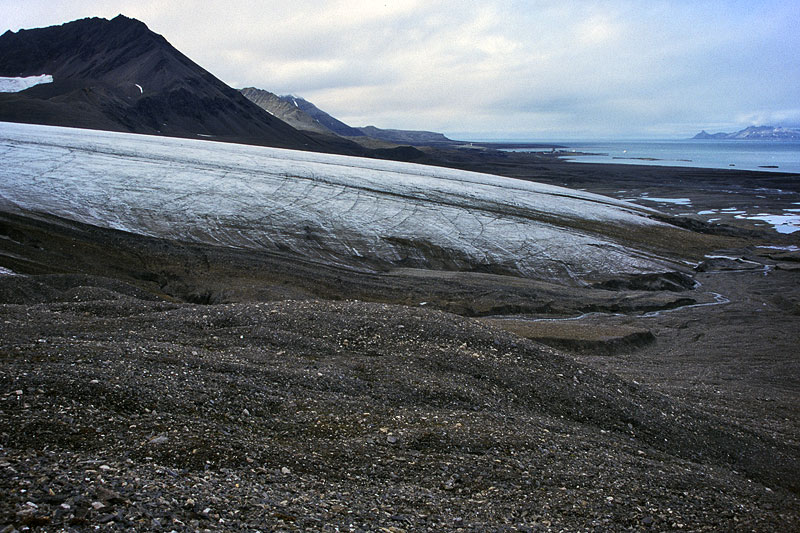 The low angle of the snout of Midre Lovénbreen is characteristic of a rapidly receding glacier. The arcuate structures are thrusts, as seen in 1999 (MH). |
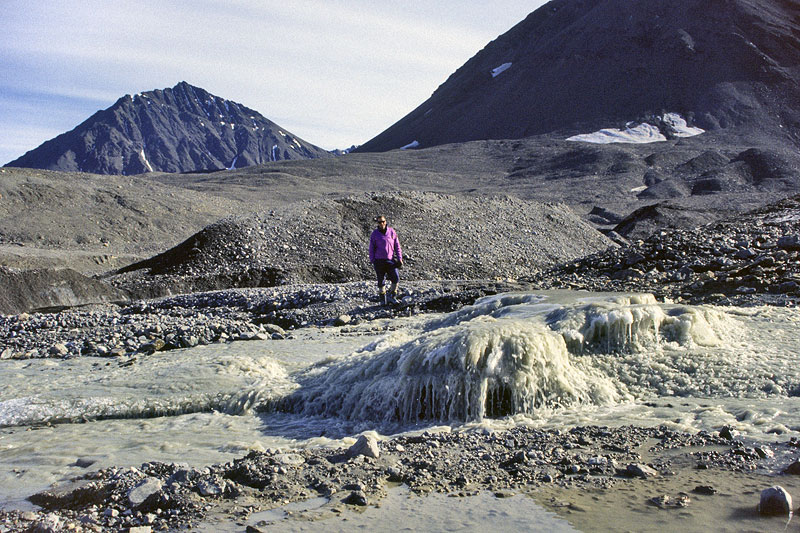 Upwelling of subglacial meltwater beyond the snout of Midre Lovénbreen in 1999. The mound is built of ice, formed from supercooled water (MH). | 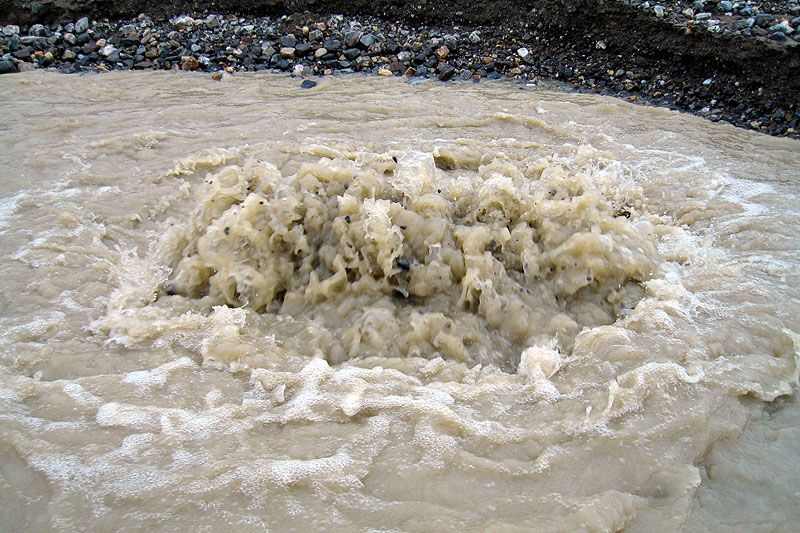 By July 2009 the upwelling had moved upvalley as the glacier receded, but was still some distance from the glacier. No supercooled water appears to be freezing, but stones are thrown up in the turbulent water. | 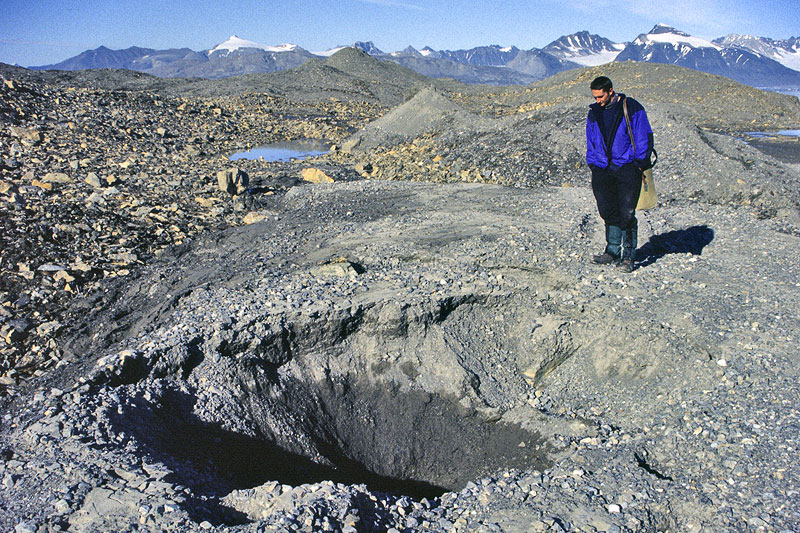 Beyond the 1999 ice margin was observed a cavity in the sediment, inferred to be the site of a former upwelling (MH). | 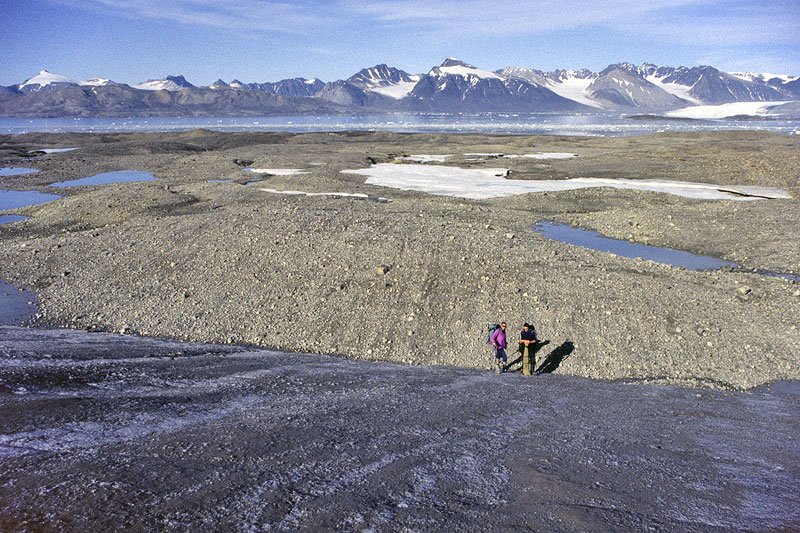 The two persons are standing at the edge of the glacier in 1999, beyond which are a series of parallel ridges or flutes (MH). |
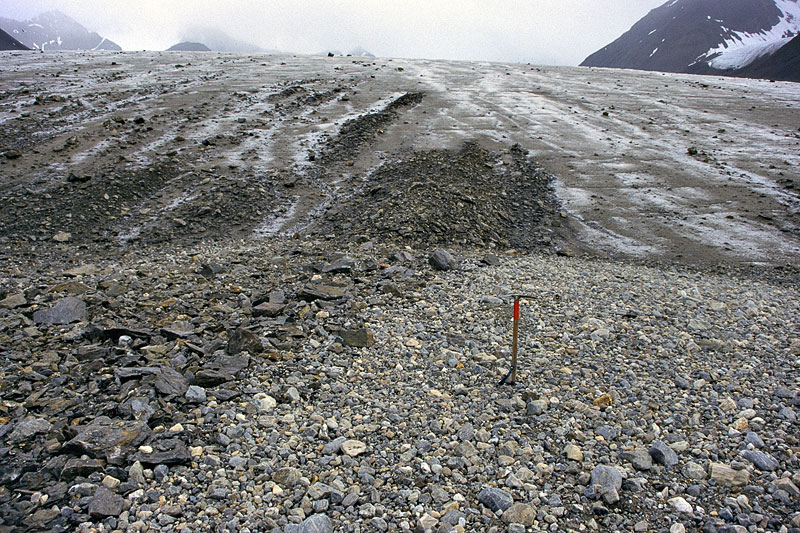 Angular debris stripe in 1999. The angular nature of the rockfall-derived stones in the stripe contrasts with underlying subrounded/subangular basal material (MH). | 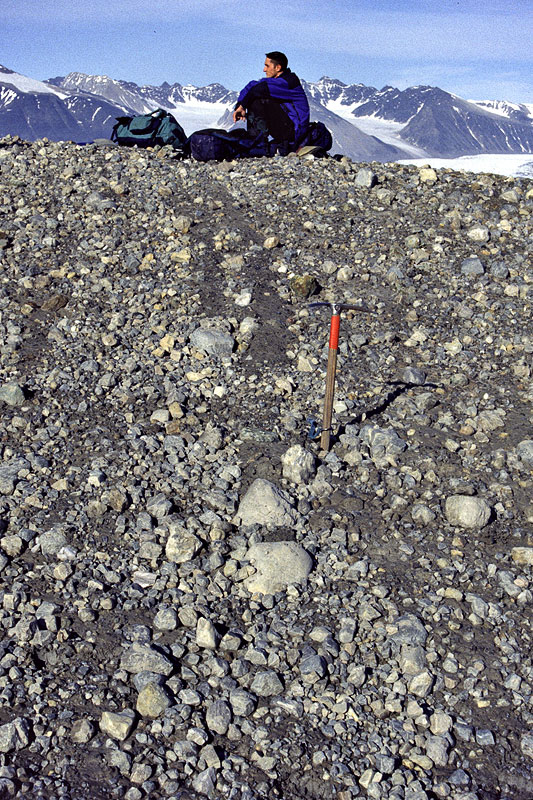 Close-up view of ridges of basally derived debris (flutes) adjacent to the ice margin in 1999 (MH). | 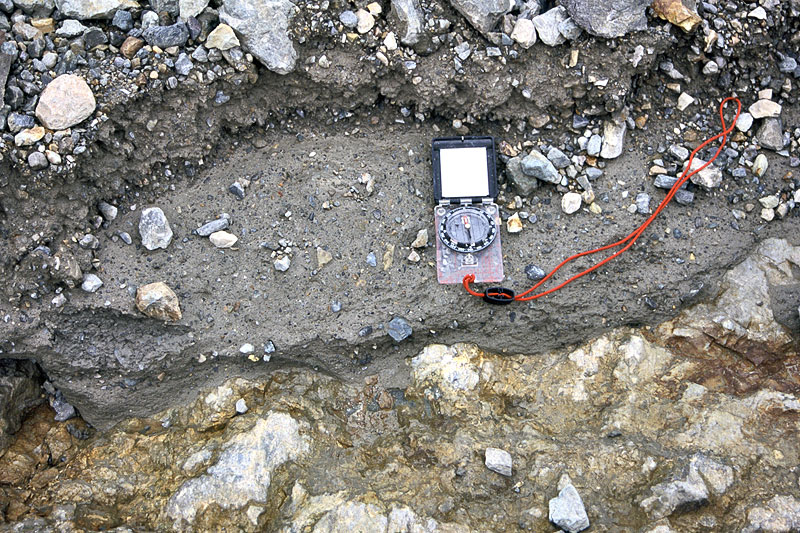 Typically basally derived debris (basal till) in the proglacial area of the glacier in 1999. The till rests directly on weathered bedrock (MH). | 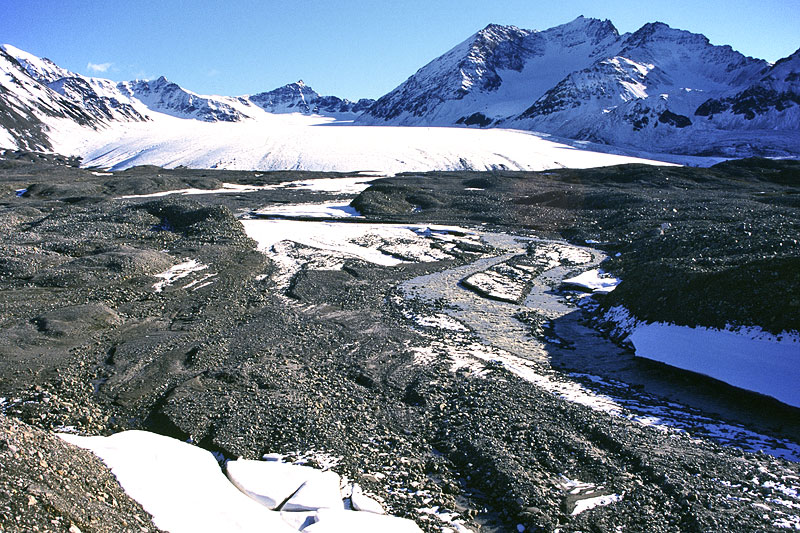 Abandoned braided channels near outer moraine complex, picked out by new snow in 2000 (MH). |
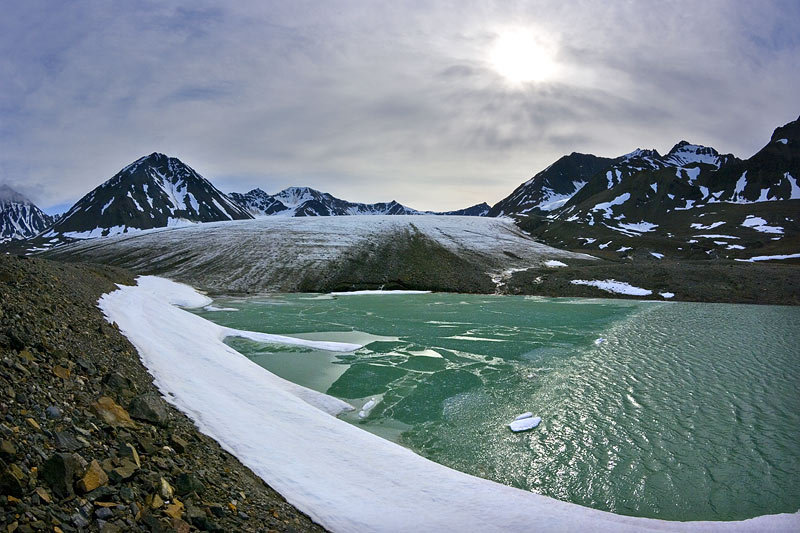 Part-frozen proglacial lake with Midre Lovénbreen beyond. Note the emergence of angular debris, originally derived from the headwall cliffs of the glacier (July 2009; JA). | 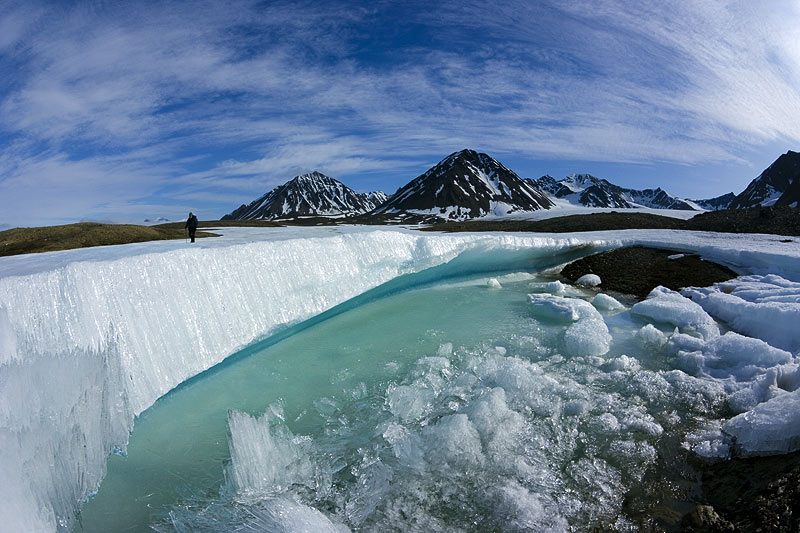 An extensive area of Aufeis, formed as water emerges from the glacier but freezes in the proglacial area in winter. This sheet is up to 3 metres thick (July 2009; JA). | 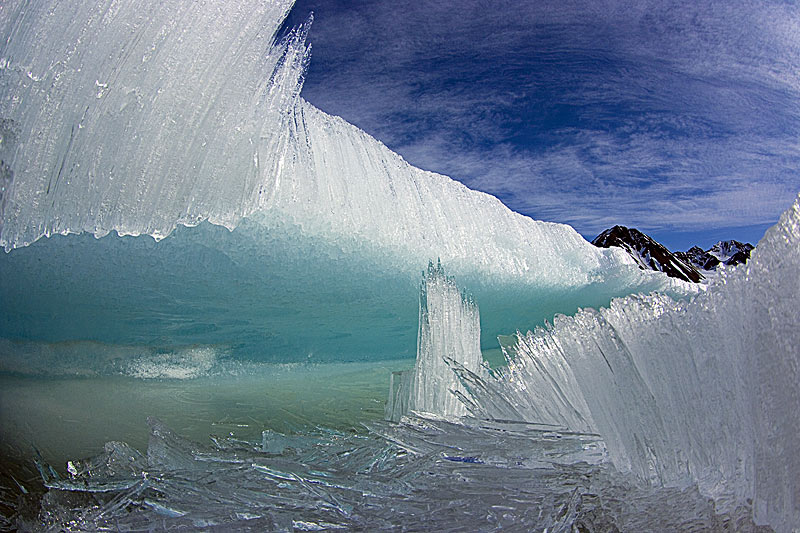 Close-up of the beautiful candle-like ice crystals about 50 cm long and referred to as Aufeis (July 2009; JA) | 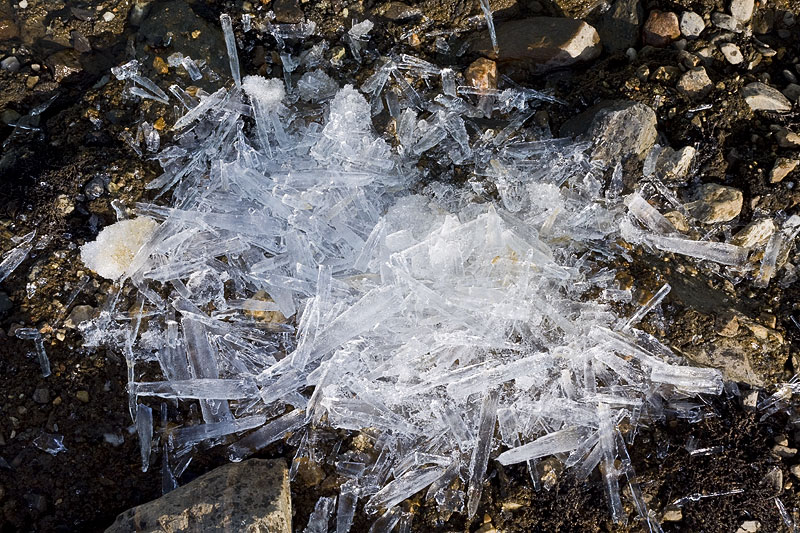 Candle ice derived from a section of Aufeis in the proglacial area of the glacier in 2009 (MH). |
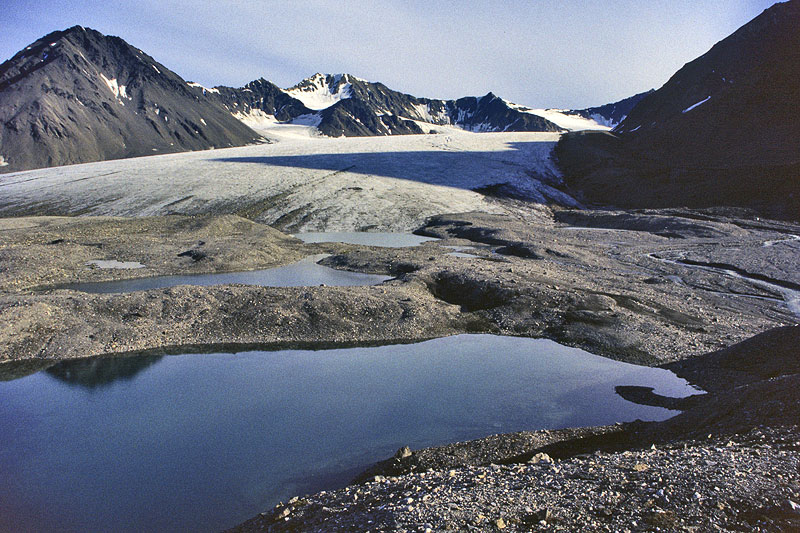 Series of kettle lakes in the proglacial area of Midre Lovénbreen in 1999, looking towards the glacier (MH). | 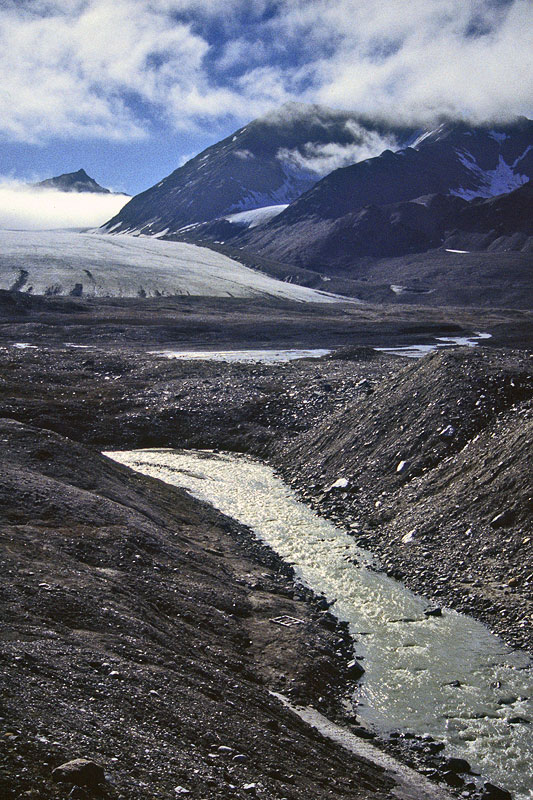 Where the glacier’s meltwater stream breaches the outer moraine it changes from braided to single channel as in this 1999 photograph (MH). | 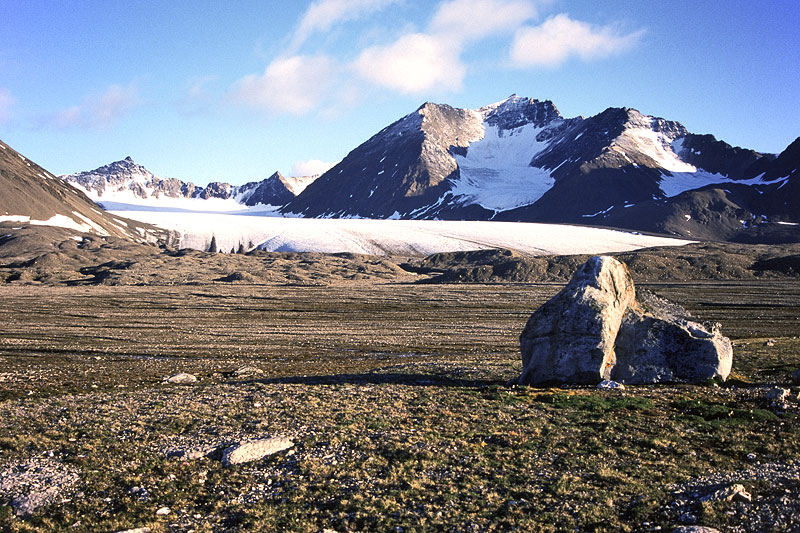 Outside the Neoglacial moraine of Midre Lovénbreen, there is little evidence of recent glaciation. Instead are a few scattered gneiss erratics, transported by an expanded Kronebreen from the head of the fjord in the Late Glacial Maximum (MH). | |
|